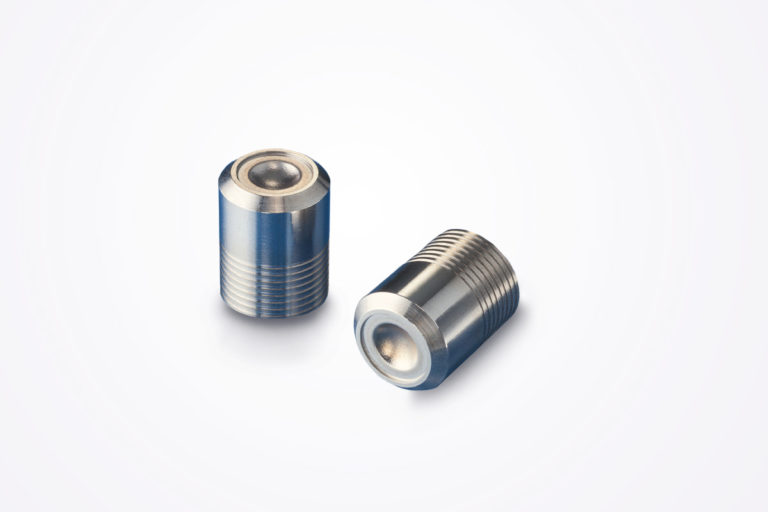The reliable operation of drilling, completion, and production equipment under extreme environmental conditions presents a major challenge as oil and gas wells continue to operate deeper within the earth. The single-use isolation device in chemical injection systems is a prime example of such a challenge. These systems inject a mix of fluid chemicals to help increase efficiency and to inhibit corrosion and harmful deposits in the tubing and tubing accessories during production. When the system is installed, the chemical injection valve requires a single-use isolation device, such as a rupture disc, to withstand a hydrostatic pressure test that checks the integrity of the injection line. Reliability is critical because a single-use device, by default, cannot be verified in advance through an acceptance test. A less reliable solution may compromise the line integrity evaluation. When the system has been validated and is ready for service, the line is over-pressurized to a predetermined point to shear or rupture the device and allow the flow of chemicals. This process is often referred to as activating the device.
Key Considerations for Selecting Rupture Discs or Other Single-Use Isolation Devices
The selection of an appropriate single-use isolation device depends upon more than just the desired burst pressure. An engineer must also determine system requirements for the following:
Lee Burst-Sert™ rupture discs provide a reliable solution for aiding in the testing and initial activation of a chemical injection system. They are available with rupture pressures ranging from 3000 to 15,000 psid and are constructed using materials compliant with NACE specification MR0175. The Burst-Sert is available in body sizes ranging from 0.250 to 0.531 of an inch in diameter and are rated for operating temperatures up to 392°F (200°C).
The Burst-Sert rupture disc allows for easy installation thanks to the integration of the field-proven Lee locking end. This self-retaining feature eliminates the need for elastomeric seals and securely locks the component into place without any bypass leakage. Additionally, the use of an anti-torque device for secondary retention is not required. Lee Burst-Serts are also capable of withstanding hydrostatic pressures in the direction opposite to rupture. Depending upon the design, this may include downstream pressures up to 50% of the burst pressure. Also, every lot of Lee Burst-Serts is tested to ensure reliable, consistent performance. For applications requiring elevated temperatures, The Lee Company can provide correlations between room temperature testing and higher operating temperatures up to 392°F (200°C). Lee Burst-Serts may be customized to include a unique feature that catches a disc in the event that it completely shears free from the housing.

Burst-Sert Potential Applications
Lee Burst-Serts are found in a wide range of applications. They are manufactured from materials that conform to NACE standard MR0175 and are suitable for use in systems with typical subsea and downhole fluids. Lee Burst-Sert rupture discs are highly customizable in performance and geometry to fit a variety of applications. In addition to chemical injection, they are used in the oil and gas industry in packers to isolate the setting chamber and ensure accurate activation. The rupture discs have also been used in motorsports and maritime applications to prevent over-pressuring the fuel and gas tanks.
The Lee Company has a long history of supplying devices for use in chemical injection systems. In fact, Lee employees were heavily involved in the creation of the American Petroleum Institute (API) Specification 19CI: Downhole Chemical Injection Devices and Related Equipment. The specification defines applicable validation and functional testing requirements. In addition to Lee Burst-Serts, downhole chemical injection systems also utilize Lee Chek® check valves for reverse flow prevention and Lee HI-BAR® Safety Screens for secondary screening.
The Lee Company has been at the forefront of fluid control technology since 1948, supplying millions of innovative products worldwide from our state-of-the-art manufacturing facilities in Connecticut, USA. We transform complex problems into deliverable solutions through ongoing research, design, development, and our commitment to quality and innovation. Our in-depth application knowledge enables us to collaborate with customers and provide personal, technical support through a wide network of experienced sales engineers who are ready to address any challenge.
Always verify flow calculations by experiment.
*There are many parameters to consider when determining V-Factor. Click here for more information.